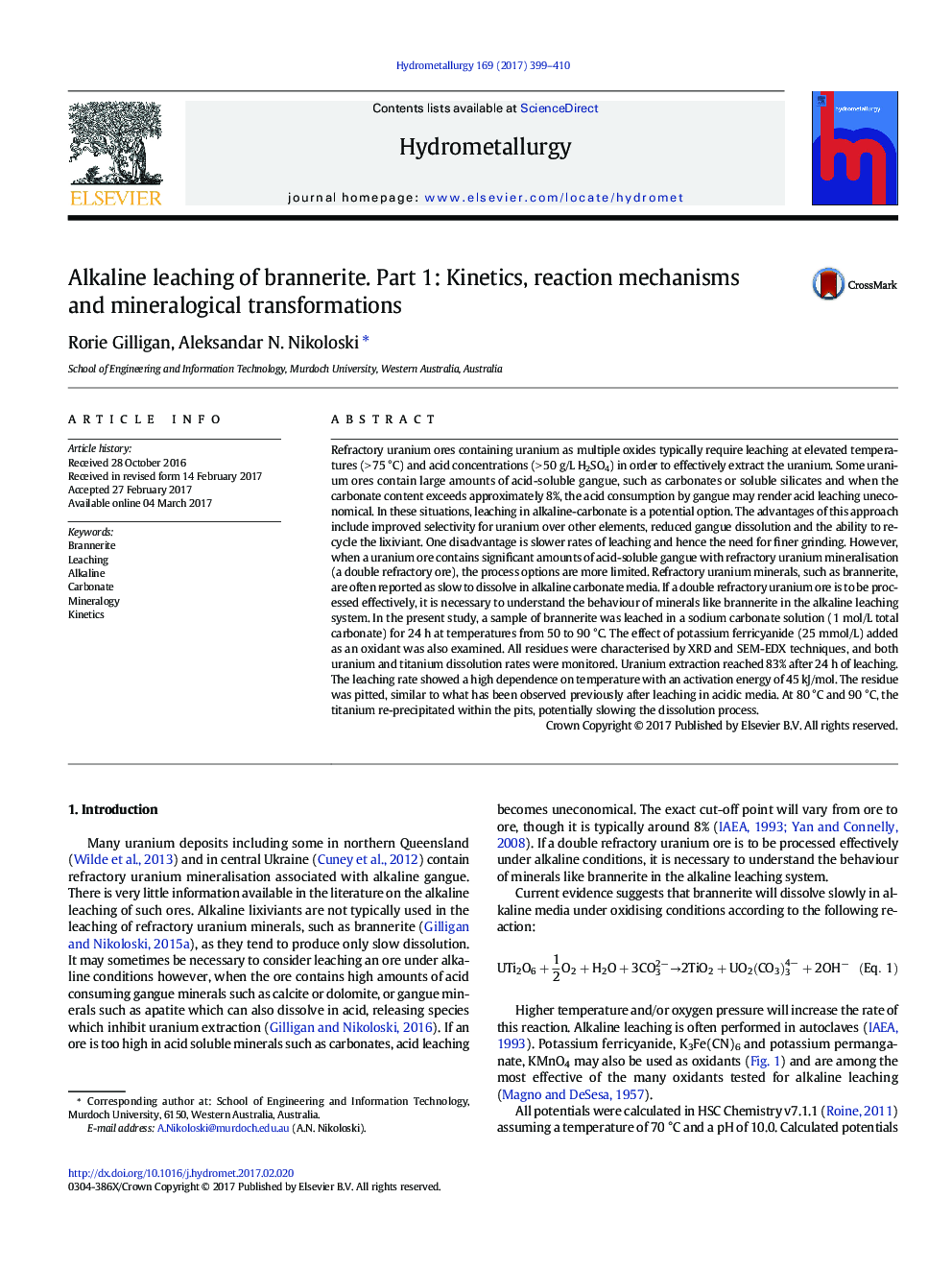| کد مقاله | کد نشریه | سال انتشار | مقاله انگلیسی | نسخه تمام متن |
|---|---|---|---|---|
| 4769351 | 1425535 | 2017 | 12 صفحه PDF | دانلود رایگان |
عنوان انگلیسی مقاله ISI
Alkaline leaching of brannerite. Part 1: Kinetics, reaction mechanisms and mineralogical transformations
ترجمه فارسی عنوان
شستشوی قلیایی فنلاندی. قسمت 1: جنبشی، مکانیزم واکنش و تحولات کانی شناسی
دانلود مقاله + سفارش ترجمه
دانلود مقاله ISI انگلیسی
رایگان برای ایرانیان
کلمات کلیدی
موضوعات مرتبط
مهندسی و علوم پایه
مهندسی شیمی
مهندسی شیمی (عمومی)
چکیده انگلیسی
Refractory uranium ores containing uranium as multiple oxides typically require leaching at elevated temperatures (> 75 °C) and acid concentrations (> 50 g/L H2SO4) in order to effectively extract the uranium. Some uranium ores contain large amounts of acid-soluble gangue, such as carbonates or soluble silicates and when the carbonate content exceeds approximately 8%, the acid consumption by gangue may render acid leaching uneconomical. In these situations, leaching in alkaline-carbonate is a potential option. The advantages of this approach include improved selectivity for uranium over other elements, reduced gangue dissolution and the ability to recycle the lixiviant. One disadvantage is slower rates of leaching and hence the need for finer grinding. However, when a uranium ore contains significant amounts of acid-soluble gangue with refractory uranium mineralisation (a double refractory ore), the process options are more limited. Refractory uranium minerals, such as brannerite, are often reported as slow to dissolve in alkaline carbonate media. If a double refractory uranium ore is to be processed effectively, it is necessary to understand the behaviour of minerals like brannerite in the alkaline leaching system. In the present study, a sample of brannerite was leached in a sodium carbonate solution (1 mol/L total carbonate) for 24 h at temperatures from 50 to 90 °C. The effect of potassium ferricyanide (25 mmol/L) added as an oxidant was also examined. All residues were characterised by XRD and SEM-EDX techniques, and both uranium and titanium dissolution rates were monitored. Uranium extraction reached 83% after 24 h of leaching. The leaching rate showed a high dependence on temperature with an activation energy of 45 kJ/mol. The residue was pitted, similar to what has been observed previously after leaching in acidic media. At 80 °C and 90 °C, the titanium re-precipitated within the pits, potentially slowing the dissolution process.
ناشر
Database: Elsevier - ScienceDirect (ساینس دایرکت)
Journal: Hydrometallurgy - Volume 169, May 2017, Pages 399-410
Journal: Hydrometallurgy - Volume 169, May 2017, Pages 399-410
نویسندگان
Rorie Gilligan, Aleksandar N. Nikoloski,
